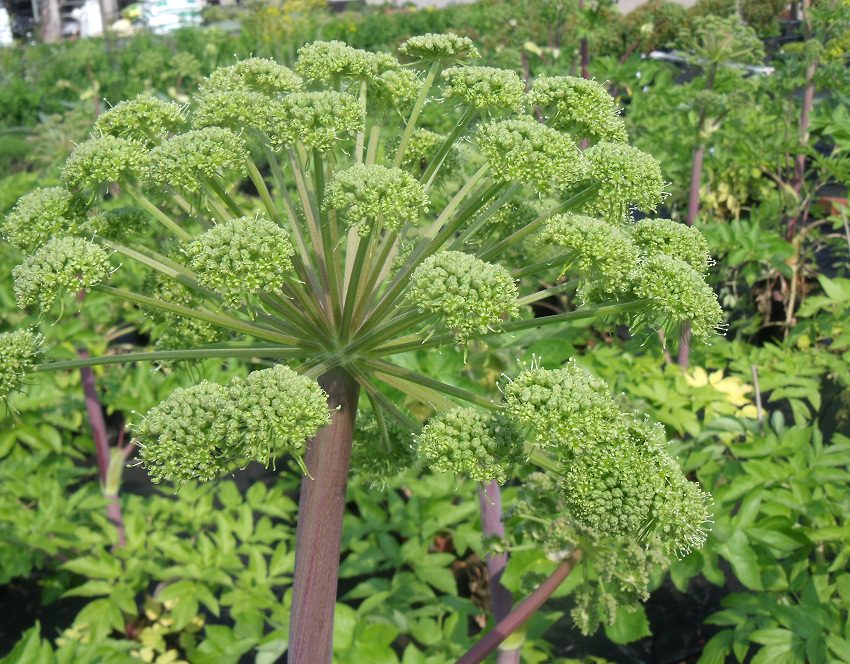Learn how to grow angelica in this article. Growing angelica is not much difficult, though require some care and growing requirements which are given below.
USDA Zones — 4-9
Difficulty — Easy
Other Names — Angel’s Herb, Root of the Holy Spirit, Garden Angelica, Holy Ghost, Wild Celery, and Norwegian Angelica.
Angelica archangelica is a biennial herbaceous plant that belongs to the Umbelliferae family. The average height of the angelica plant is 100-120 cm. Its stems are branched, hairless, quite sturdy and with streaks of dark red. Angelica leaves are green on the upper side, lighter in the lower one and are arranged alternately on the side. The flowers are light yellow gathered in umbels that appear on the tops of the stems. Flowering occurs in the second year after planting.
How to Grow Angelica
Propagation and planting
For growing angelica, propagate it by division or from seeds. You can sow seeds in early spring indoors. Angelica seeds germinate in 3 to 4 weeks, germination rate is low. Sowing seeds in late summer and fall is also possible. Planting angelica is also possible in pots.
Growing Angelica
Location
The optimal exposure of the angelica plant is in full to part sun. Exposure to sun depends more on the climate. In warmer zones, growing angelica in full sun is not required there it tolerates semi-shaded exposure, sheltered from winds. It is resistant to low temperatures so it can adapt to the harsh winters too.
Soil
It grow in almost all types of soil. The plant has deep roots so it prefers deep soil that is well-drained, light, rich in organic matter and moist. Ideal soil pH level for growing angelica should be slightly acidic.
Watering
Angelica does not tolerate drought, it requires constantly moist soil and cool temperature. Make sure to water the plant regularly. To retain moisture, you can mulch the plant which will limit the evaporation of water.
Angelica Plant Care
Angelica plant care is easy. Mulching, pruning and fertilizing is required for lush growth.
Fertilizer
Fertilize once a month with 10-10-10 fertilizer. You can also dress the base of plant with compost, it will serve both as mulch and slow release fertilizer.
Diseases and Pests
Angelica is not much susceptible to pests and diseases. However, the plant is affected by aphids. Keep an eye on them and if they colonize your plant use appropriate organic pesticide to get rid of them.
Also Read: How to Kill Aphids Naturally
Harvesting and Storage
You can start to harvest the leaves and young stems a few months after planting. Young shoots are collected according to the need as soon as the plant is strong enough. Seeds are collected in the next year.
Keep well dried seeds in boxes or sealed jars on a cool and dry place. Leaves and petioles are to be consumed the same day. However, you can freeze them to use later.


